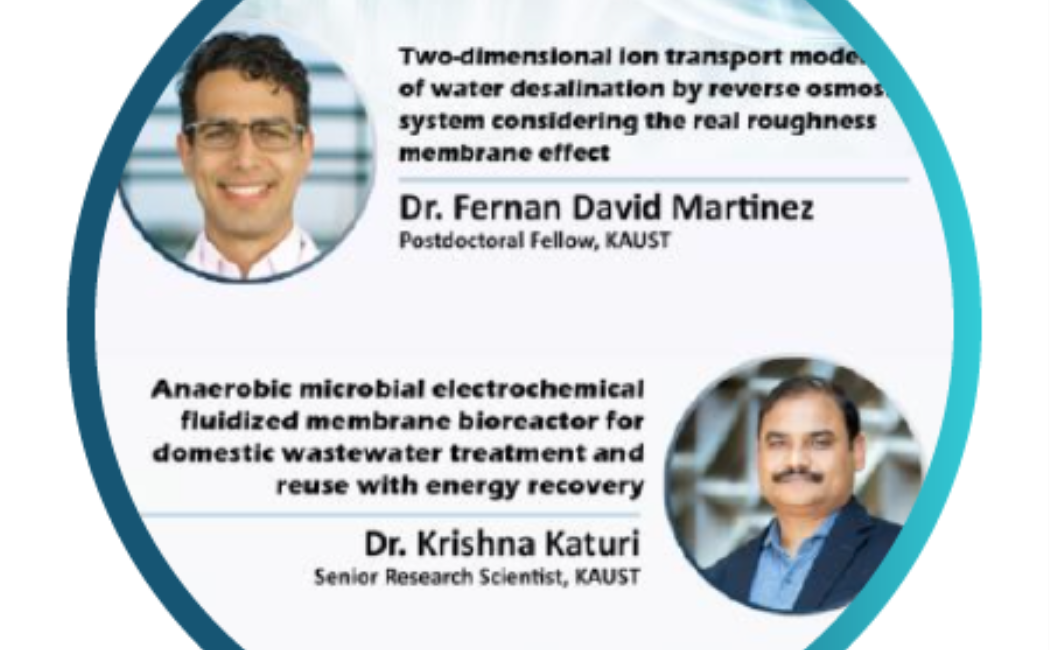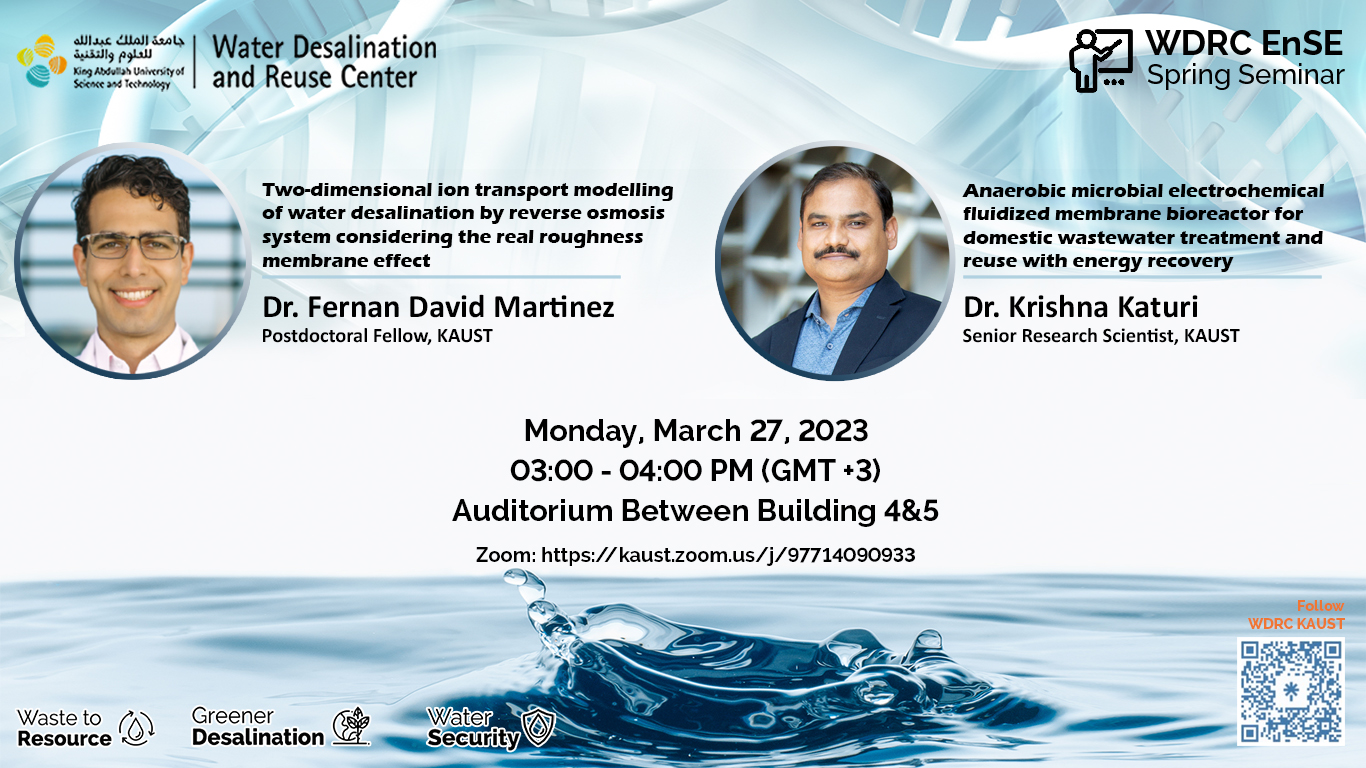



Venue: Auditorium, level 0, between bldg. 4&5
Abstract:
Standard technologies for water desalination, such as ultrafiltration (UF), nanofiltration (NF), and reverse osmosis (RO), separate high concentrations of ions (e.g., Cl - , Na + , K + , Mg 2+ , Ca 2+ ) by pressing water through selective membranes. Modern composite membranes have an ultrathin polyamide active layer (20–200 nm) that performs the ion separation and support layers of polysulfone (20–50 µm) and polyester (50–150 µm). Current theoretical models, such as the solution-diffusion or solution-friction, explain the solute and water fluxes by computing concentration and potential gradients developed in one direction, namely perpendicular to the membrane surface. However, several experimental studies indicated a relationship between membrane morphology and its permeability and selectivity. Only very few studies described the effects of polyamide membrane roughness on the RO process through two-dimensional (2-D) models. However, even considering a simplified 2D representation of the irregular active layer morphology, the phenomenological approach disregarded phenomena deemed necessary in other numerical models, such as the membrane charge, electrical and steric partition, convection, and electromigration transport in boundary layers and through the PA active layer.
We developed a solution-friction 2-D model to describe the transport of multiple ions through an RO membrane with an irregular polyamide active layer. The model considers the effect of active layer morphology (i.e., roughness, variable thickness, a finger-like structure), all transport mechanisms (diffusion, convection, electromigration), membrane charge, and the water-membrane partition effects (e.g., Donnan, steric, etc.). We characterized the polyamide membrane structure through transmission electron microscopy (TEM) and scanning electron microscopy (SEM), and from these images, characteristic model geometries were constructed. A two-dimensional extension of the solution-friction model, coupled with water flow and partition equilibria, provided new insight into the Na + and Cl - transport within the non-uniform active polyamide layer of composite reverse osmosis membranes. Numerical simulations indicated that the irregular morphology of the active layer (e.g., variable thickness, roughness, finger-like structures) can produce a non-uniform spatial distribution of the ionic fluxes. A very irregular active layer geometry was shown to be correlated with the greatest NaCl permeability.
About the speaker:
Dr. Fernan Martinez`s research focuses on mathematic modeling and simulation of bioprocess with physical, chemical, and biological interactions. Dr. Martinez also has experience in programming with Python and Matlab. His main research interests are mathematical modeling, simulation process, computational fluid dynamics, membranes, and biotechnological science.
Abstract:
Water and energy shortages are major problems facing many countries. To combat these issues, increased water recycling and energy efficiency can help us conserve and better manage resources. To address these global challenges, we have designed a novel solar-energy power biosystem at the pilot scale of 36 liters, capable of treating domestic wastewater while recovering water for non-potable applications and energy. This biosystem interconnects science (e.g., microbiology, electrochemistry, microbial ecology, and membrane science) and engineering (e.g., bioprocess engineering) to harness valuable resources from wastewater. This comprehensive interdisciplinary approach is highly beneficial in tackling critical global issues such as climate change and economic growth while providing water, energy, and food security.
About the speaker:
Dr. Krishna P. Katuri is a Senior Research Scientist in Prof. Pascal Saikaly’s group (Water Desalination and Reuse Center). Dr. Katuri received his Ph.D. in Bioengineering (2005) from the Indian Institute of Chemical Technology, India. Before moving to KAUST in 2012, he was a Marie Curie experienced researcher at Newcastle University (2006–2008) and the National University of Ireland, Galway (2008–2011). His research focuses on developing sustainable circular bioeconomy-strategies for waste-to-resource recovery through underpinning anaerobic microbial physiology.